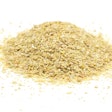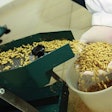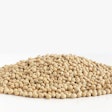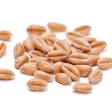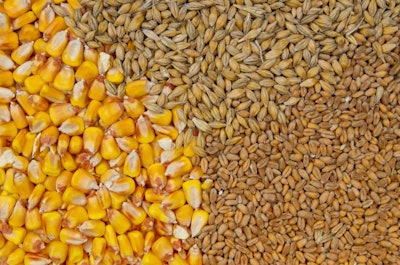
Cereal grains are vulnerable to agents that reduce their quality, acceptability and safety.
Cereal grains, such as corn, sorghum, wheat, etc., remain a live organism that continues to undergo certain biochemical procedures during storage. As such, they are vulnerable to agents that reduce their quality, acceptability and safety.
There are three factors that determine the preservation of quality in cereal grains: moisture, temperature and time of storage.
Moisture refers to internal moisture as grains are received from the field and that of their storage environment, which can increase or decrease internal moisture. Wet grains need to be dried to proper dry matter concentration (usually above 86%) before long-term storage. Equally, if grains become wet due to external environmental conditions during storage, then they should be dried again or undergo aeration to reduce internal moisture content. In most cases, this is an expensive procedure that greatly adds to the cost of cereal grains.
Temperature becomes a problem mostly when it is elevated. High temperatures combined with increased humidity create optimal conditions for pests and enemies of grains. Even freezing temperatures are undesirable because they can cause grains to fracture, exposing the endocarp that is more vulnerable than the exterior of the grain.
Finally, the longer the storage period, the longer the risk of exposing the grains to adverse environmental conditions. Plus, during respiration, grains may lose some of their nutritive value (energy) as they convert starch to carbon dioxide. Thus, the longer grains are stored the highest the risk of losing their initial quality.
Molds
Molds produce mycotoxins that cause toxicity in animals, even in minute amounts (subclinical symptoms). There are specific additives that can be used during storage to prevent the growth of molds, but these certainly increase the cost of cereals. Plus, their dosage must be analogous to the exposure and risk, and this is something that is hard to predict. At any rate, experienced grain storage managers are aware of this issue.
It is best, obviously, to receive properly dried grain and keep it under optimal conditions, but this is not always possible. Here, it should be noted that broken kernels are attacked first by molds, as intact kernels are protected better by the harder pericarp of the grain.
Insects
These are another enemy of grains, and although they cause little harm to animals – at least most of them – they reduce the nutritive value of the grains. Insects consume grains, especially when these are broken up, and multiply under a diverse range of conditions, and certainly under hot/humid environments. Fumigation of grains is possible, only with approved chemicals, but the final step of aeration to remove traces of the fumigant may decrease the availability of grains (it takes some time), especially if an automatic aeration system is not available. At any rate, fumigation further increases cost, but it may be a necessary measure if infestation exceeds certain levels, and for exports to certain destinations.
Oilseeds
The case of oilseeds, such as soybeans, is a bit more complicated than that of cereal grains. Oilseeds contain a considerable amount of oil (18% in the case of soybeans) that can become oxidized, especially in broken seeds. Rancidity cannot be stopped, only delayed, once it starts and, for that, it is better not to store oily grains for prolonged periods of time, especially under adverse conditions. Adding an antioxidant is something of questionable value, but not entirely out of the question for highly vulnerable cargoes – but again, it certainly adds to the cost.
All in all, storing grains is not an easy proposition because grains often need to be stored from harvest to harvest – that is a full year – to ensure animals have enough feed to eat. This is why smaller animal farms continue to buy smaller loads of grains throughout the year from large grain storage facilities that have the means to preserve grain quality.
Trans-oceanic transportation
Grains are constantly being transported via ship vessels throughout the world, with the trip reaching up to two months is certain cases. During that time, grains can undergo exposure to different weather outbursts, and certainly they are constantly at risk of absorbing moisture due to proximity to water.
Experienced cargo liners have the means to protect such cargo either in bulk or in containers through proper means, but not all grains are shipped in such a way. Thus, moldy or super-moist grains end up reaching their destination port only to be rejected by the local authorities. Here, it is the shipping company that needs to provide proper care for its live cargo, and of course the exporter’s duty to deliver only the best product possible.





